-
 Bitcoin
Bitcoin $107,443.3008
-1.17% -
 Ethereum
Ethereum $2,494.2503
-0.63% -
 Tether USDt
Tether USDt $1.0003
0.00% -
 XRP
XRP $2.2496
2.23% -
 BNB
BNB $658.7569
0.63% -
 Solana
Solana $154.9826
1.94% -
 USDC
USDC $1.0000
0.01% -
 TRON
TRON $0.2799
1.07% -
 Dogecoin
Dogecoin $0.1659
-1.78% -
 Cardano
Cardano $0.5745
0.25% -
 Hyperliquid
Hyperliquid $39.7005
0.13% -
 Bitcoin Cash
Bitcoin Cash $519.5989
3.78% -
 Sui
Sui $2.7874
-2.40% -
 Chainlink
Chainlink $13.3762
-1.69% -
 UNUS SED LEO
UNUS SED LEO $9.0784
-0.64% -
 Avalanche
Avalanche $17.9846
-2.81% -
 Stellar
Stellar $0.2390
-0.06% -
 Toncoin
Toncoin $2.9028
0.25% -
 Shiba Inu
Shiba Inu $0.0...01147
-2.17% -
 Litecoin
Litecoin $86.6956
-1.27% -
 Hedera
Hedera $0.1508
-0.50% -
 Monero
Monero $322.6222
3.26% -
 Polkadot
Polkadot $3.4124
-2.99% -
 Dai
Dai $0.9999
0.00% -
 Bitget Token
Bitget Token $4.5434
-1.97% -
 Ethena USDe
Ethena USDe $1.0002
0.00% -
 Uniswap
Uniswap $7.1562
-2.61% -
 Aave
Aave $275.8830
-1.02% -
 Pepe
Pepe $0.0...09790
-4.04% -
 Pi
Pi $0.5018
-5.09%
How to participate in liquidity mining on Gate.io
Learn how to participate in liquidity mining on Gate.io: stake assets in pools, earn rewards, and manage risks like impermanent loss and market volatility.
Apr 06, 2025 at 03:28 am
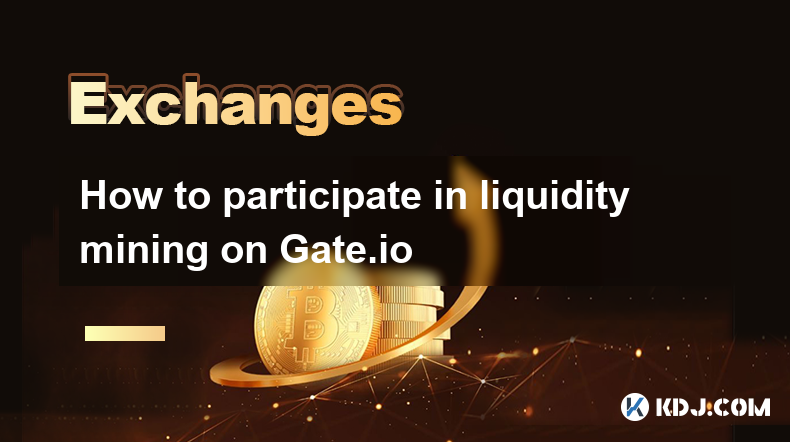
Liquidity mining has become a popular way for cryptocurrency enthusiasts to earn rewards by providing liquidity to decentralized exchanges (DEXs) and other platforms. Gate.io, one of the leading cryptocurrency exchanges, also offers liquidity mining opportunities. This article will guide you through the process of participating in liquidity mining on Gate.io, explaining the steps, requirements, and potential benefits.
Understanding Liquidity Mining
Liquidity mining, also known as yield farming, involves providing liquidity to a platform in exchange for rewards. On Gate.io, users can participate in liquidity mining by staking their assets in specific pools. These pools are designed to enhance the liquidity of certain trading pairs, and in return, participants receive tokens as rewards. The rewards are typically distributed based on the amount of liquidity provided and the duration of the stake.
Preparing to Participate in Liquidity Mining on Gate.io
Before you can start liquidity mining on Gate.io, there are a few preparatory steps you need to take. First, ensure that you have a verified Gate.io account. You will need to complete the KYC (Know Your Customer) process to access all features, including liquidity mining. Next, you should have the necessary cryptocurrencies in your Gate.io wallet. The specific tokens required will depend on the liquidity pool you wish to join.
Choosing the Right Liquidity Pool
Gate.io offers various liquidity pools, each with its own set of requirements and rewards. To choose the right pool, consider the following factors:
- Token Pair: Ensure that you have both tokens in the pair. For example, if you want to join the ETH/USDT pool, you need to have both ETH and USDT.
- Reward Token: Check what token is offered as a reward. Some pools may offer more attractive rewards than others.
- APY (Annual Percentage Yield): Higher APYs can mean higher potential returns, but they often come with higher risks.
- Pool Size and Liquidity: Larger pools may offer more stability, but smaller pools might provide higher rewards due to less competition.
Staking Your Assets
Once you have chosen a liquidity pool, you can proceed to stake your assets. Here’s how to do it:
- Navigate to the liquidity mining section on Gate.io.
- Select the pool you want to join.
- Enter the amount of each token you wish to stake. The platform will automatically calculate the required ratio.
- Confirm the transaction and wait for the assets to be staked.
Monitoring and Managing Your Staked Assets
After staking your assets, it’s important to monitor your investment. Gate.io provides a dashboard where you can track your staked assets, rewards earned, and the current APY. You can also manage your staked assets by adding more liquidity or withdrawing your stake, although the latter may come with a withdrawal fee or a lock-up period.
Understanding the Risks
While liquidity mining can be lucrative, it comes with risks. Here are some key risks to be aware of:
- Impermanent Loss: If the price of the tokens in the pool changes significantly, you may experience impermanent loss, which can reduce your overall returns.
- Smart Contract Risk: There is always a risk that the smart contracts used for liquidity mining could have vulnerabilities that could be exploited.
- Market Volatility: Cryptocurrency markets are highly volatile, and the value of your staked assets and rewards can fluctuate significantly.
Maximizing Your Returns
To maximize your returns from liquidity mining on Gate.io, consider the following strategies:
- Diversify: Participate in multiple liquidity pools to spread your risk.
- Stay Informed: Keep up with market trends and adjust your strategy accordingly.
- Reinvest Rewards: Reinvesting your earned rewards can compound your returns over time.
Withdrawing Your Rewards and Staked Assets
When you decide to withdraw your rewards or staked assets, follow these steps:
- Go to the liquidity mining section on Gate.io.
- Select the pool from which you want to withdraw.
- Choose whether you want to withdraw your rewards, your staked assets, or both.
- Confirm the transaction and wait for the withdrawal to be processed.
Common Questions About Liquidity Mining on Gate.io
Q: What is liquidity mining on Gate.io?
A: Liquidity mining on Gate.io involves staking your cryptocurrencies in specific pools to provide liquidity, in exchange for rewards in the form of tokens.
Q: How do I start liquidity mining on Gate.io?
A: To start, you need a verified Gate.io account, the required cryptocurrencies in your wallet, and you must choose a liquidity pool, stake your assets, and monitor your investment.
Q: What are the risks of liquidity mining on Gate.io?
A: Risks include impermanent loss, smart contract vulnerabilities, and market volatility, which can affect the value of your staked assets and rewards.
Q: How can I maximize my returns from liquidity mining on Gate.io?
A: You can maximize returns by diversifying across multiple pools, staying informed about market trends, and reinvesting your rewards to compound your earnings.
Q: Can I withdraw my staked assets and rewards at any time?
A: You can withdraw your rewards and staked assets, but be aware that there may be withdrawal fees or lock-up periods depending on the specific pool's rules.
Disclaimer:info@kdj.com
The information provided is not trading advice. kdj.com does not assume any responsibility for any investments made based on the information provided in this article. Cryptocurrencies are highly volatile and it is highly recommended that you invest with caution after thorough research!
If you believe that the content used on this website infringes your copyright, please contact us immediately (info@kdj.com) and we will delete it promptly.
- Donald Trump, TRUMP Memecoin, and the Latest Move: A New York Perspective
- 2025-07-01 17:10:12
- Cardano, Solana, XRP: Navigating the Crypto Seas in Q3 2025
- 2025-07-01 16:30:12
- Bitcoin Holders and the Price Hold: What's the Deal?
- 2025-07-01 16:50:26
- ChatGPT, Crypto Trading, and a $100K Profit: AI's Edge in the Wild West
- 2025-07-01 16:30:12
- Mutuum Finance Presale vs. Dogecoin: A New Challenger Approaches?
- 2025-07-01 16:50:26
- Memecoins to Buy in July 2025: Riding the Hype Wave
- 2025-07-01 17:10:12
Related knowledge
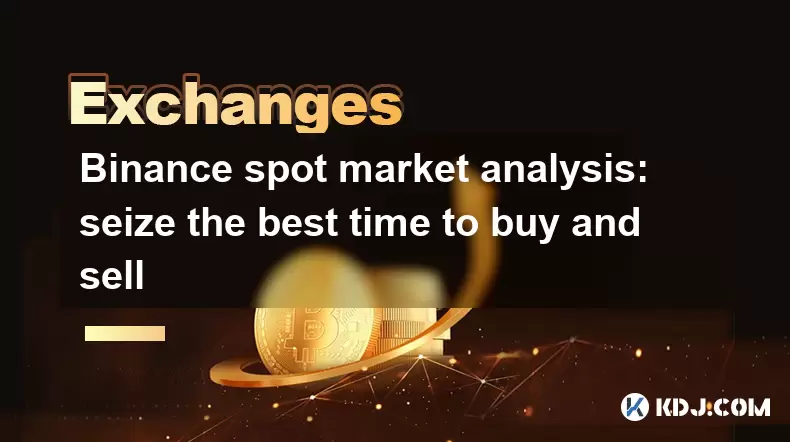
Binance spot market analysis: seize the best time to buy and sell
Jun 19,2025 at 04:56pm
Understanding the Binance Spot MarketThe Binance spot market is one of the most popular platforms for cryptocurrency trading globally. It allows users to trade digital assets at current market prices, making it essential for traders aiming to buy low and sell high. Unlike futures or margin trading, spot trading involves direct ownership of the asset aft...
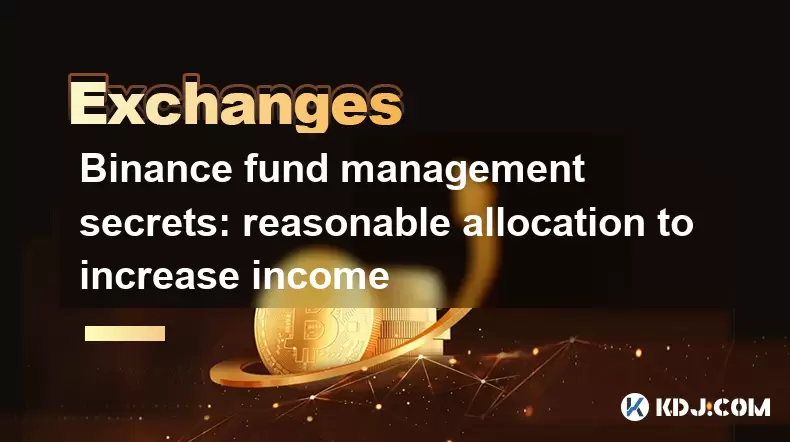
Binance fund management secrets: reasonable allocation to increase income
Jun 22,2025 at 02:29pm
Understanding Binance Fund ManagementBinance fund management involves strategic allocation of your cryptocurrency assets to optimize returns while managing risk. The key to successful fund management lies in understanding how different investment options on the Binance platform can be utilized to create a diversified portfolio. This includes spot tradin...
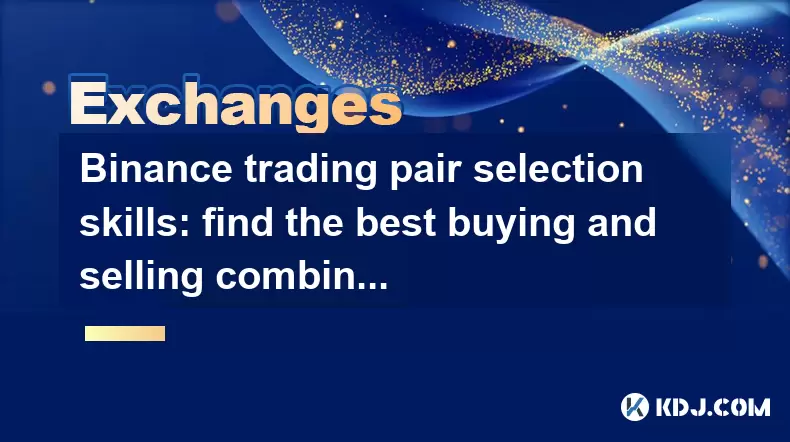
Binance trading pair selection skills: find the best buying and selling combination
Jun 23,2025 at 02:49am
Understanding the Basics of Trading Pairs on BinanceBefore diving into trading pair selection skills, it's essential to understand what a trading pair is. On Binance, a trading pair refers to two cryptocurrencies that can be traded against each other. For example, BTC/USDT means Bitcoin is being traded against Tether. Each trading pair has its own liqui...
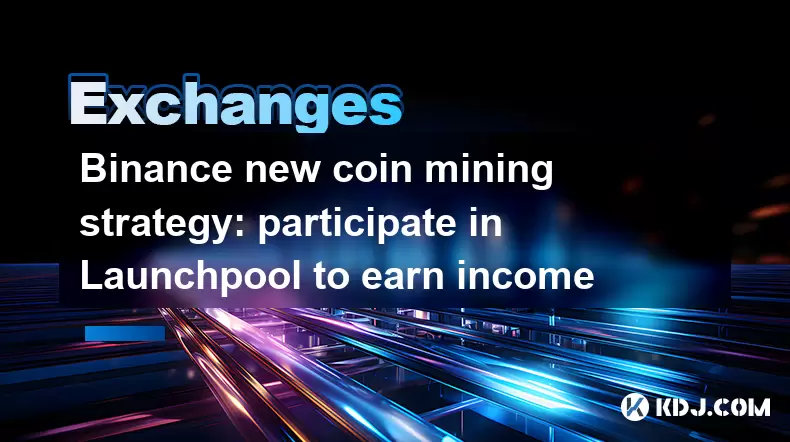
Binance new coin mining strategy: participate in Launchpool to earn income
Jun 23,2025 at 11:56am
What is Binance Launchpool and how does it work?Binance Launchpool is a feature introduced by the world’s largest cryptocurrency exchange, Binance, to allow users to earn new tokens through staking. This platform enables users to stake their existing cryptocurrencies (such as BNB, BUSD, or other supported assets) in exchange for newly launched tokens. T...
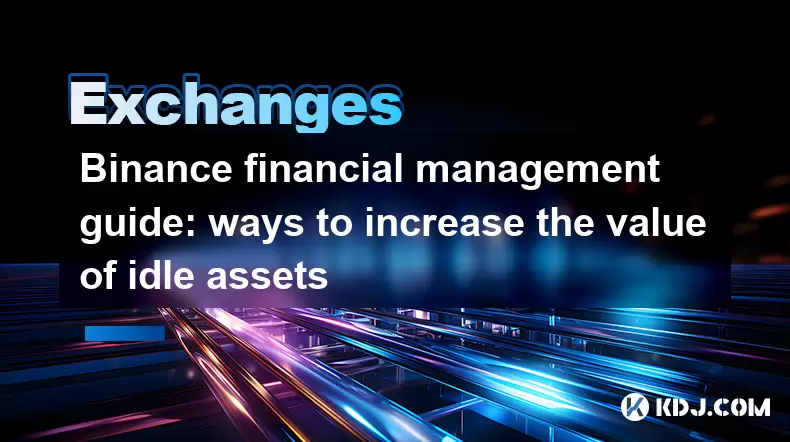
Binance financial management guide: ways to increase the value of idle assets
Jun 19,2025 at 11:22pm
Understanding Idle Assets in the Cryptocurrency SpaceIn the fast-paced world of cryptocurrency, idle assets refer to digital currencies that are not actively being used for trading, staking, or yield farming. Holding these funds in a wallet without utilizing them means missing out on potential growth opportunities. Binance, as one of the leading platfor...
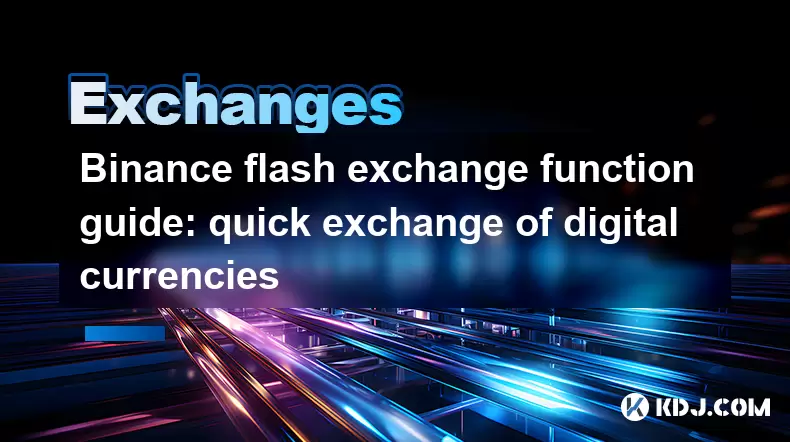
Binance flash exchange function guide: quick exchange of digital currencies
Jun 23,2025 at 12:29pm
What is the Binance Flash Exchange Function?The Binance Flash Exchange function is a powerful tool designed to allow users to instantly swap between supported cryptocurrencies without the need for placing traditional buy/sell orders. This feature simplifies the trading process by offering a direct exchange mechanism, eliminating the requirement to conve...

Binance spot market analysis: seize the best time to buy and sell
Jun 19,2025 at 04:56pm
Understanding the Binance Spot MarketThe Binance spot market is one of the most popular platforms for cryptocurrency trading globally. It allows users to trade digital assets at current market prices, making it essential for traders aiming to buy low and sell high. Unlike futures or margin trading, spot trading involves direct ownership of the asset aft...

Binance fund management secrets: reasonable allocation to increase income
Jun 22,2025 at 02:29pm
Understanding Binance Fund ManagementBinance fund management involves strategic allocation of your cryptocurrency assets to optimize returns while managing risk. The key to successful fund management lies in understanding how different investment options on the Binance platform can be utilized to create a diversified portfolio. This includes spot tradin...

Binance trading pair selection skills: find the best buying and selling combination
Jun 23,2025 at 02:49am
Understanding the Basics of Trading Pairs on BinanceBefore diving into trading pair selection skills, it's essential to understand what a trading pair is. On Binance, a trading pair refers to two cryptocurrencies that can be traded against each other. For example, BTC/USDT means Bitcoin is being traded against Tether. Each trading pair has its own liqui...

Binance new coin mining strategy: participate in Launchpool to earn income
Jun 23,2025 at 11:56am
What is Binance Launchpool and how does it work?Binance Launchpool is a feature introduced by the world’s largest cryptocurrency exchange, Binance, to allow users to earn new tokens through staking. This platform enables users to stake their existing cryptocurrencies (such as BNB, BUSD, or other supported assets) in exchange for newly launched tokens. T...

Binance financial management guide: ways to increase the value of idle assets
Jun 19,2025 at 11:22pm
Understanding Idle Assets in the Cryptocurrency SpaceIn the fast-paced world of cryptocurrency, idle assets refer to digital currencies that are not actively being used for trading, staking, or yield farming. Holding these funds in a wallet without utilizing them means missing out on potential growth opportunities. Binance, as one of the leading platfor...

Binance flash exchange function guide: quick exchange of digital currencies
Jun 23,2025 at 12:29pm
What is the Binance Flash Exchange Function?The Binance Flash Exchange function is a powerful tool designed to allow users to instantly swap between supported cryptocurrencies without the need for placing traditional buy/sell orders. This feature simplifies the trading process by offering a direct exchange mechanism, eliminating the requirement to conve...
See all articles

























































































